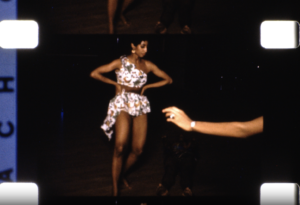Join us for an afternoon of South Side home movies, featuring newly preserved films of Bronzeville from filmmaker Ramon Williams!
In partnership with South Side Home Movie Project, with support from the Gaylord and Dorothy Donnelly Foundation, SSCAC is thrilled to host a special screening showcasing select cinema reels of Ramon Williams. Ramon Williams, Black IBEW electrician and film hobbyist, was an early adopter of amateur filmmaking and invested in documenting the Bronzeville community in which he lived — filming major Bronzeville social and civic events between the 1940s and 1960s.
We’re honored to show a selection of these films during Black History Month, to highlight Ramon Williams’s commitment to documenting Black life on the South Side, and the lasting legacy of Black cinema’s power to visualize Black life in real time.

We’ll be joined by SSHMP Assistant Director, Saroop Singh (fka Justin Williams), Bronzeville Historical Society President Sherry Williams, and PhD student in Cinema and Media Studies at U Chicago, Avery LaFlamme for a live dialogue about Ramon’s cinema work and legacy in the Bronzeville community.
Donated to South Side Home Movie Project in 2020, the Ramon Williams Collection encompasses 302 film reels, their largest donation yet, representing never-before-seen visual records of Bronzeville authored by one of its few citizens with a movie camera! What was Black social life like during that time? How did Black folks present and fashion themselves? What were significant events that took place in the Bronzeville community? We hope you’ll join us to find out!




